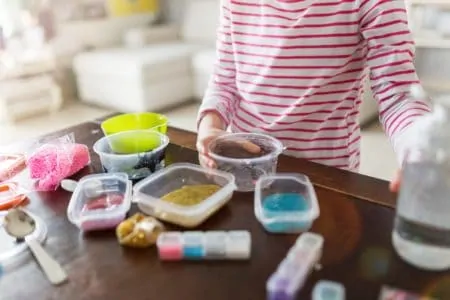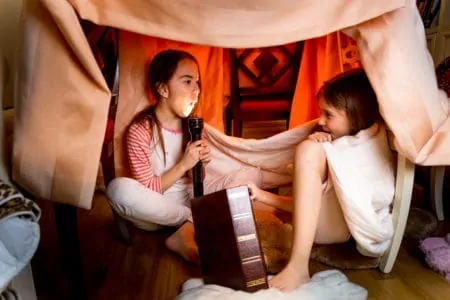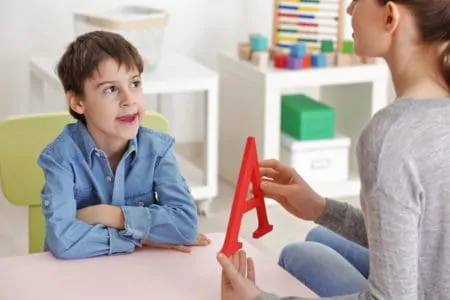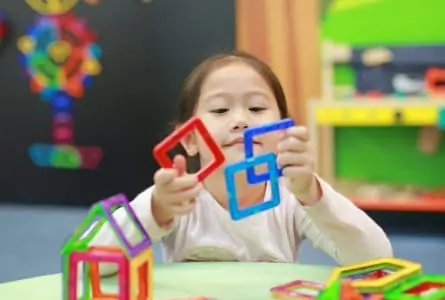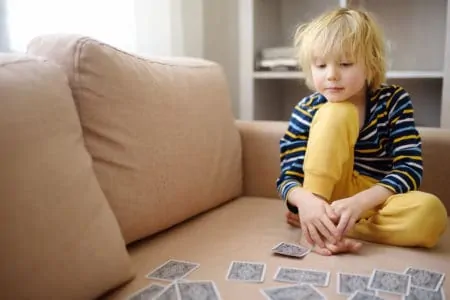Let’s face it: kids are obsessed with slime. It is gooey, stretchy, weirdly satisfying, and arguably the trend that just won’t quit. Beyond the mess, it is actually a fantastic way to introduce the scientific method, patience, and sensory play to your little ones.
However, the internet is full of recipes calling for borax (sodium tetraborate). While natural, it is a harsh chemical cleaner that can cause skin burns and respiratory issues. Why risk it?
We have ditched the harsh chemicals to bring you the ultimate guide on how to make slime without borax. These recipes are safer, just as squishy, and kid-approved.
Key Takeaways
Making slime is a fun science experiment, but safety comes first. Here is what you need to know about ditching the borax box for safer alternatives.
- Safety first: Borax powder can cause chemical burns and irritation; avoiding it makes playtime safer for sensitive skin.
- Know your activators: Common household items like contact solution, cornstarch, and baking soda replace harsh chemicals to create that perfect stretch.
- Variety is key: You can make everything from “cloud slime” (using shaving cream) to edible-safe fiber slime.
- Supervision required: Even without borax, most slime recipes are not edible and require adult supervision.
What Is Slime, Anyway?
Science time: Slime is a non-Newtonian fluid. That is a fancy way of saying it breaks the rules. It acts as both a liquid and a solid depending on how you treat it. Squeeze it tight, and it feels solid; relax your hand, and it flows like thick water.
To make this magic happen, you generally need two things:
- The Base: Usually PVA glue (polyvinyl acetate) and water.
- The Activator: The secret sauce that links the glue molecules together (cross-linking) to turn sticky goo into a cohesive blob.
You can tweak the ratio of base to activator to change the texture. Want it rubbery? Add more activator. Want it oozing? Add less. This is where the fun (and the mess) happens.
Pro Tip
Why Is Borax Bad?
Borax isn’t inherently evil; it is a powerful laundry booster. But for a craft project involving bare hands, it is risky. While many people use it without issue, sensitive skin + harsh chemicals = bad news.
Irritation Risks
Borax is a powder. When you pour it, fine dust enters the air. Inhaling this can irritate the lungs, which is dangerous for kids with asthma. On the skin, prolonged exposure to high concentrations can lead to rashes, dermatitis, and in rare cases, nasty chemical burns.
It Is Toxic if Swallowed
Slime looks like candy to a toddler. Ingesting borax can cause nausea, vomiting, and diarrhea (1). It doesn’t take much to cause a serious problem; as little as 5 grams can be dangerous for a small child (2).
Why worry about grams and toxicity when you can just use cornstarch or baking soda?
5 Borax-Free Slime Recipes That Actually Work
Ready to get messy? We have tested these recipes to ensure they work without the box of laundry powder.
Important Note: Some “borax-free” recipes online use liquid starch or laundry detergent. We typically avoid those too, as they often contain similar chemical compounds. The recipes below are safer bets.
1. Shampoo and Cornstarch Slime
This is the “Pantry Special.” It has a dough-like consistency and smells amazing.
Ingredients
- 1/2 cup cornstarch.
- 1 cup thick shampoo (gel-like shampoos work best).
- 6 tablespoons water.
Method
- Combine dry and wet: Mix the shampoo and cornstarch in a medium bowl. It will look crumbly at first.
- Add water slowly: Add one tablespoon of water and mix.
- Adjust texture: Add the remaining water one drop at a time. You want a smooth, malleable dough, not a soup.
- Knead it: Work the dough with your hands for 5 minutes to smooth it out.
2. The Classic Glue and Cornstarch Slime
This recipe creates a substance often called “Oobleck.” It is less rubbery than store-bought slime but demonstrates non-Newtonian physics perfectly.
Ingredients
- 1 cup white craft glue (PVA).
- 1/2 cup cornstarch.
- 1 cup water.
- Food coloring (optional).
Method
- Dilute the glue: Mix the water and glue in a bowl until fully combined.
- Color it: If you want colorful slime, add your drops now. It is harder to mix in later.
- Thicken it up: Slowly stir in the cornstarch. The mixture will start to resist your spoon. Keep mixing until it reaches that magical solid-liquid state.
3. Fluffy Slime (Shaving Cream & Saline)
This is the fan favorite. It is puffy, stretchy, and feels like a cloud.
Ingredients
- 1 cup white school glue.
- 1 cup shaving cream (foam, not gel).
- 1 teaspoon baking soda.
- 2, 3 teaspoons contact lens saline solution.
- Food coloring.
Method
- Mix the base: In a bowl, thoroughly blend the glue and baking soda.
- Make it fluffy: Fold in the shaving cream. Don’t over-mix; keep it airy! Add food coloring now.
- Activate: Add the saline solution slowly while stirring. The mixture will start pulling away from the sides of the bowl.
- Knead: Once it isn’t too sticky to touch, take it out and knead it with your hands to firm it up.
Pro Tip
4. Edible-Safe Fiber Slime
Got a toddler who puts everything in their mouth? This is the safest recipe. It uses fiber powder (psyllium husk), which gels up when heated.
Ingredients
- 1 cup water.
- 1 teaspoon powdered fiber (must contain psyllium).
- Food coloring.
Method
- Whisk: Mix the fiber, water, and food coloring in a large microwave-safe bowl. Whisk well to break up clumps.
- Zap it: Microwave for 4 to 5 minutes. Watch it like a hawk; if it bubbles up to the rim, stop the microwave immediately.
- Cool and repeat: It will look bubbly. Stir it and let it cool. If it isn’t thick enough, zap it for another minute.
- Final cool: This gets very hot. Let it cool completely before handing it to a child.
5. Stretchy Baking Soda & Contact Solution Slime
This is the closest you will get to store-bought slime without using raw borax powder.
Ingredients
- 1 (6 oz) bottle of Elmer’s white glue.
- 1/2 teaspoon baking soda.
- 1 1/2 tablespoons contact lens solution.
Method
- The setup: Pour the entire bottle of glue into a bowl. Stir in the baking soda completely.
- The activation: Squirt in the contact solution while stirring. You will feel it get tough almost instantly.
- The finish: Once it clumps into a ball, take it out. It will be wet at first; keep kneading it until it is dry and stretchy.
Tips for a Mess-Free Experience
- Clean hands: Wash hands before and after play. Oils on your hands can make slime break down faster.
- Vinegar is your friend: Did slime get on the carpet? Don’t panic. White vinegar dissolves slime. Soak the spot, wipe, and rinse. See our full cleaning guide here.
- Glow up: Swap water for tonic water in recipes that require water. The quinine in tonic water glows under a blacklight.
- Storage matters: Air is the enemy. Store slime in an airtight Tupperware container or a Ziploc bag. Keep it in the fridge to prevent mold growth.
- Stain prevention: Food coloring stains everything. Use washable watercolors or non-staining dyes if you value your tablecloth.
FAQs
Go With The Flow
Slime making can be a little mucky and occasionally frustrating (we have all had a batch turn into soup), but that is part of the charm. It is a lesson in chemistry, measurements, and tactile exploration.
Plus, it keeps the kids off screens for an hour, which is a win in our book. Whether you are building a science kit or just killing a rainy afternoon, these recipes are a safe bet. Happy sliming!
